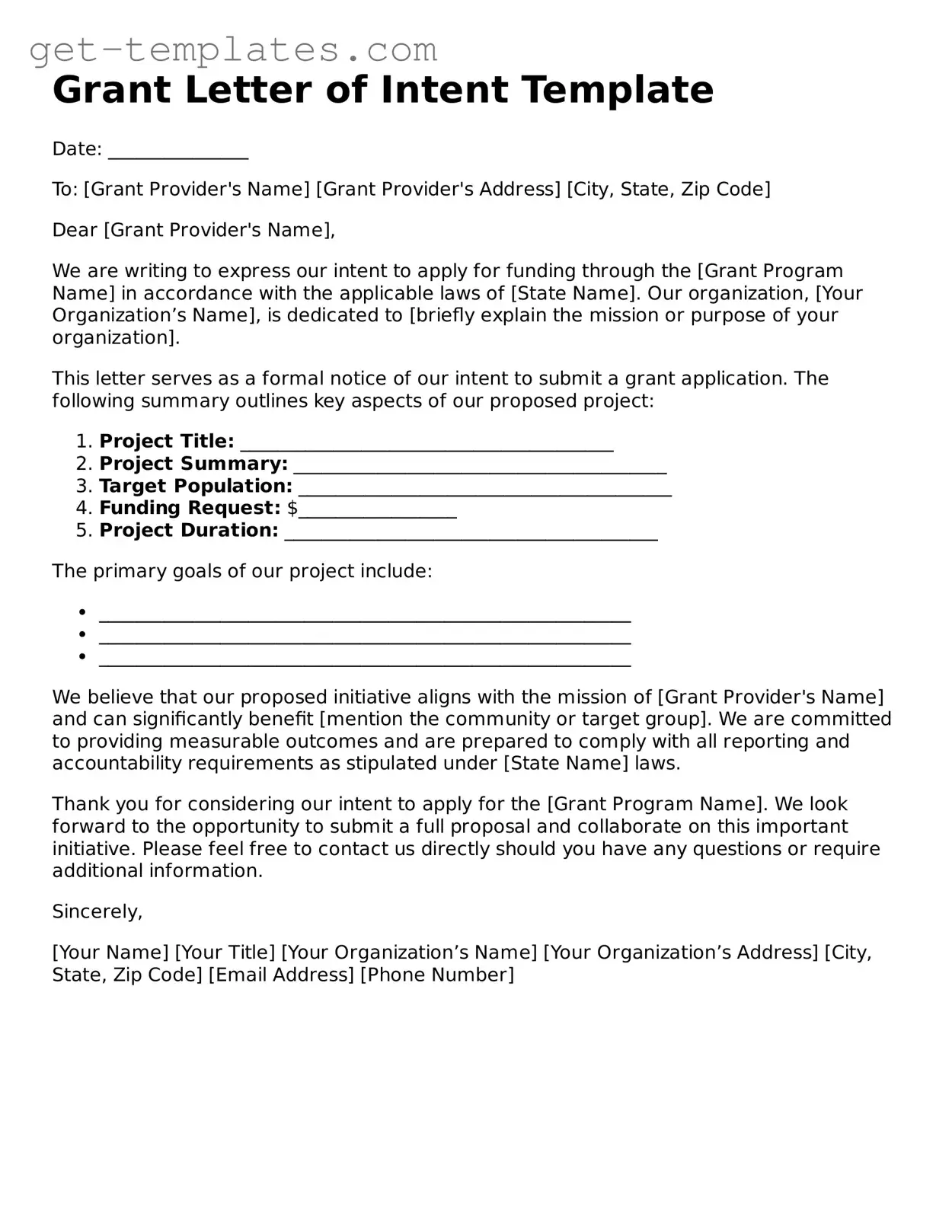Grant Letter of Intent Template
Date: _______________
To: [Grant Provider's Name]
[Grant Provider's Address]
[City, State, Zip Code]
Dear [Grant Provider's Name],
We are writing to express our intent to apply for funding through the [Grant Program Name] in accordance with the applicable laws of [State Name]. Our organization, [Your Organization’s Name], is dedicated to [briefly explain the mission or purpose of your organization].
This letter serves as a formal notice of our intent to submit a grant application. The following summary outlines key aspects of our proposed project:
- Project Title: ________________________________________
- Project Summary: ________________________________________
- Target Population: ________________________________________
- Funding Request: $_________________
- Project Duration: ________________________________________
The primary goals of our project include:
- _________________________________________________________
- _________________________________________________________
- _________________________________________________________
We believe that our proposed initiative aligns with the mission of [Grant Provider's Name] and can significantly benefit [mention the community or target group]. We are committed to providing measurable outcomes and are prepared to comply with all reporting and accountability requirements as stipulated under [State Name] laws.
Thank you for considering our intent to apply for the [Grant Program Name]. We look forward to the opportunity to submit a full proposal and collaborate on this important initiative. Please feel free to contact us directly should you have any questions or require additional information.
Sincerely,
[Your Name]
[Your Title]
[Your Organization’s Name]
[Your Organization’s Address]
[City, State, Zip Code]
[Email Address]
[Phone Number]
